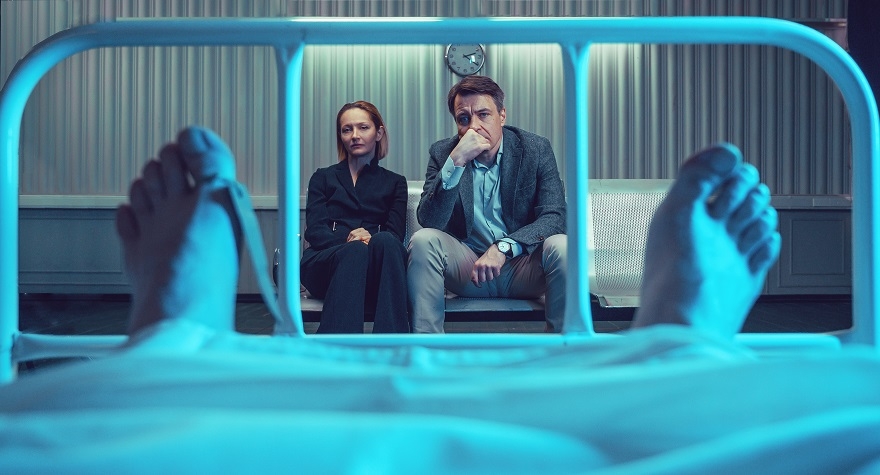

Terminal 3 is a one-act drama, part of a cycle of eleven plays by Lars Norén, the most prolific Swedish playwright. He has 14 books of poetry, four novels and over 70 works for the theater to his credit. Critics consider him a follower of Samuel Beckett and Harold Pinter. Norén's plays are often built around family and personal issues, or around people living in material comfort but being emotionally insecure.
The main characters of Terminal 3 are two married couples who meet in a hospital waiting room. The younger one is waiting for the birth of their first child, and the older one comes to identify their son who committed suicide. Neither couple is sure they are in the right place, but somehow the waiting room feels oddly familiar to the older couple.
“Generally speaking, this is a play about life and death presented through the study of the relationship between a man and a woman. It is a peculiar variation on the theme of Bergman's Scenes from a Marriage,” - says the director of the play, Nikita Kobelev. “There is an interesting trick in the play – it starts in an absolutely realistic way, but at a certain moment the reality divides right before our eyes, the story soars over the life of specific characters and turns into a metaphysical conversation about human destinies.”
The prduction’s set designer, Nana Abdrashitova, continues the traditions of a well-known family of artists (great-grandfather, Mose Toidze, was an academician and a student of I.E. Repin; grandfather, Georgy Toidze, was a famous sculptor and graphic artist; mother, Natella Toidze is a corresponding member of the Academy of Arts of the Russian Federation). Nana solves the task of dividing reality by using different details in the design of the space, they rhyme with each other and conflict with each other, causing a feeling of strangeness and anxiety. She follows the definition of Terminal 3, given by Lars Norén himself: "It is a kind of a faceless room, a transit zone between life and death, a crossroads of the present and the future, where both who are being born wander together with the dead."
As part of the sound design of the performance, the voice of Valeria Borisova sounds.